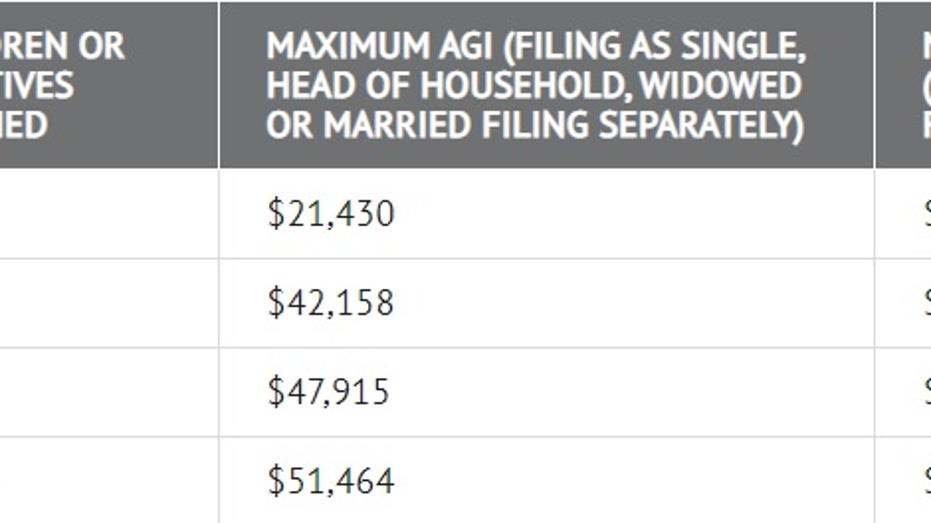The 5 biggest tax breaks for parents in 2022
Tax breaks can help offset some of the expenses associated with raising a child
When my children were young, I remember hearing statistics regarding how much it costs to raise a child from birth to age 18. The number struck me as horrendous and far more expensive than I could imagine. Although we did end up spending a small fortune, it was not all at once, which I still consider a small blessing. No matter how much you spend raising your children, the government does give you a break of sorts by offering credits and deductions at tax time. Here are some of the biggest.
1. Earned Income Tax Credit (EITC)
The EITC is designed to help those living in poverty get a little something back at tax time. While a person does not have to be a parent to claim the EITC, parents receive a higher tax credit. If the following criteria apply to your child, that child also qualifies for EITC:
- Has a valid Social Security number
- Is under the age of 19 (or 24 if enrolled in college full-time)
- Has a relationship with you
- Lived with you in the U.S. for at least half of 2021
3 THINGS TO KNOW WHEN FILING TAXES FOR YOUR SIDE HUSTLE
As mentioned, EITC is meant to help low-income Americans, so there are income thresholds that must be met. Here's a breakdown of income limits for the 2021 tax year, according to the IRS.

Data source: IRS ( )
In addition to annual income limits, you can have no more than $10,000 in investment income to qualify for EITC. If you qualify, the amount you will receive depends on your adjusted gross income (AGI) and the number of children claimed. For example:
- No qualifying children: $1,502
- 1 qualifying child: $3,618
- 2 qualifying children: $5,980
- 3 or more qualifying children: $6,728
6 REASONS YOU MIGHT WANT TO FILE TAXES EARLY THIS YEAR
2. Child and Dependent Care Tax Credit
Another credit that can increase your bottom line this year is the Child and Dependent Care Tax Credit. If you pay for childcare while you're working (or while you are looking for work), this credit offers a tax break.
Qualifications
To qualify, the child (or children) being cared for must be under age 13. The exception to the rule is a child mentally or physically unable to care for themselves at age 13 or older.
How much you can receive
The credit you are eligible to receive is based on two things:
- Your income
- The amount you spend to pay for care
The American Rescue Plan Act of 2021 made the credit more generous. Depending on your situation, you can qualify for up to $4,000 for one dependent and $8,000 for two or more qualifying dependents.
HOW WILL AMAZON'S STOCK SPLIT IMPACT MY TAX RETURNS?
3. Child Tax Credit
Between July and December 2021, millions of families received six monthly Child Tax Credit payments. Each payment was up to $300 per child under the age of 6 and $250 for children ages 6 to 17. Married couples filing jointly were eligible for full payments with an adjusted gross income (AGI) of $150,000 a year or less, and single filers were eligible for full payments with an AGI of $112,500 or less.
Even if you received a payment each month between July and December, that's only half of what you're owed. You can file for the rest of the credit on your 2021 tax return. It will either be included in your refund or used to reduce any taxes you owe.
If you opted not to receive Child Tax Credit payments in the last half of 2021 or the IRS doesn't know about a new dependent added to your family, you're eligible to receive the entire Child Tax Credit amount. That's a full $3,600 per child under the age of 6 and $3,000 for each child between ages 6 and 17.
GET FOX BUSINESS ON THE GO BY CLICKING HERE
4. 529 state tax plans
529 state plans are designed to help save for a child's educational expenses. Between the two types of 529s available in some states -- the prepaid tuition plan and education savings plan -- you can prepay credits at a college or university for future use or save for a child's elementary, secondary, college, or trade school education.
A 529 can't be used as a deduction on your federal tax return but can be deducted from most state tax returns. In addition, if you use the funds in a 529 state tax plan to cover qualified education expenses, any earnings on the money are not subject to federal taxes.
CLICK HERE TO READ MORE ON FOX BUSINESS
5. American Opportunity Tax Credit (AOTC)
As long as your modified gross income (MAGI) does not exceed $160,000 if you're married filing jointly, or $80,000 if you're a single filer, you're eligible for the education tax credit. Here's how it works:
You claim qualified expenses you paid for a dependent's first four years of college, university, or trade school. This includes tuition, course materials, and fees. The most you can claim per child is $2,500. Through AOTC, you can receive up to $1,000 of those funds back as a refund or an offset of taxes you owe.
If you're eligible, you should receive a Form 1098-T from the educational institution your dependent attends. If you believe you qualify for the credit but have not received a 1098-T, reach out to the school.
There's no denying that raising a child is an expensive venture. Any money back into your bank account is money you'll have on hand to pay for the next big thing.




















